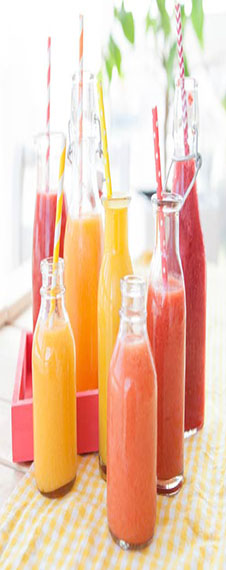Oral Health
Just Say No to Fruit Juice Before Age 1
Deardoctor.com
When the labels claim “100% juice,” “no added sugar” and “all natural,” it’s tempting to think that juice is a good nutritional choice for children. That’s why parents buy gallons of it every year, daycares stock juice boxes adorned with beloved cartoon characters, and school cafeterias serve juice to help satisfy the USDA daily fruit requirements. But according to the American Academy of Pediatrics (AAP), drinking lots of juice isn’t doing kids any good.
A new policy statement issued by the AAP — the organization’s first new juice recommendations since 2001 — advises parents and caregivers to scale juice consumption way back among children. The bottom line: Just say no to any juice in the first year of a child’s life, and severely limit juice consumption for the rest of childhood. What’s the problem?
Rising obesity rates in children and concerns over a rapid and destructive form of tooth decay known as “early childhood caries” have sparked concern. The new recommendations state that 100 percent juice can be part of a well-balanced diet over age 1… but with a daily limit of 4 ounces per day from ages 1-3, 4 to 6 ounces through age 6, and 8 ounces through age 18. However, juice is “absolutely unnecessary for children under 1,” according to Dr. Melvin B. Heyman, MD, one of the authors of the AAP statement issued in May 2017.
Even in juice with no added sugar, the higher concentration of sugars naturally found in fruit can lead to tooth decay, the most common chronic disease among young children. So while serving juice is easy — it involves no washing or slicing, and it can be sipped from convenient on-the-go containers like juice boxes or sippy cups — it isn’t what’s best for kids. When children are old enough to eat solid foods, fruit is the way to go because it provides fiber, is less calorie-dense and makes you feel fuller. And when children do consume juice, for the best dental health they should drink it within the recommended limits and only with a meal.


